April 10, 2014 | Posted in TRADITIONAL ART AND PAINTING | By sockii
A Must-See Exhibition for Lovers of Watercolor Painting and Art
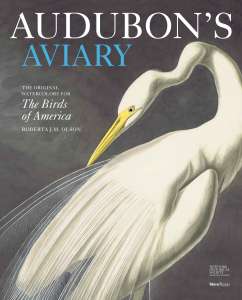
Audubon’s Aviary: The Original Watercolors for The Birds of America. Buy the exhibit catalog at Amazon.com
Beginning last year, the New York Historical Society has staged a landmark three-part exhibition of John James Audubon’s preparatory watercolors for his famous art portfolio and book, The Birds of America. For those passionate about Audubon’s art, this exhibition is an absolute must-see, a once-in-a-lifetime opportunity to view these wonderful original paintings which are all part of the Historical Society’s permanent collection.
Currently on exhibit from March 21—May 26, 2014 is Part II of “The Complete Flock”, entitled Parts Unknown. This selection focuses primarily on water birds and waders, and include some of Audubon’s largest and most spectacular paintings: magnificent cranes, cormorants, geese, ducks and of course the stately pelican. Many of these images were begun during Audubon’s trips to America’s Southeast and then during his Labrador Expedition, when already he started to note and warn about the depletion of natural habitats and exploitation of the wilderness. Indeed, six of the species Audubon painted for The Birds of America are today extinct.
The Birds of America
John James Audubon was a naturalist, born originally on the French colony on Saint-Domingue and noted to have an affinity for birds from an early age. He emigrated to the United States in 1803 at the age of 18, where he soon began studying American birds: banding them, drawing and painting them, learning taxidermy and scientific research methods. By 1820, after various jobs and business ventures, he set forth on the mission to find and paint every bird in North America, with the goal of eventually publishing his studies.
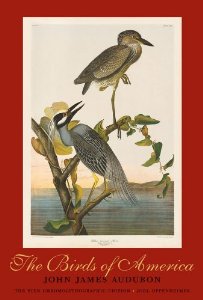
The Birds of America: The Bien Chromolithographic Edition available at Amazon.
Audubon worked primarily in watercolor but also combined and mixed media including pastel, gouache, chalk, ink, scratch-out and also collage. He had developed a unique way of working with dead specimens, pinning them to a grid in life-like poses, so he could use an (admittedly somewhat macabre) version of the classic “grid method” to compose his drawings. Initial support for his project was lacking in the United States, so in 1826 he set sail for the United Kingdom with 250 of his original works, seeking financial backers and skilled engravers and printers who could reproduce them.
The first edition of The Birds of America would begin publication in 1827. Known as the Havell edition, after the famed family of engravers and etchers who published it, this was produced on handmade paper 39.5 inches tall by 28.5 wide using primarily copperplate etching with watercolor applied by hand. It was extremely costly, but funded via pay-as-you-go subscriptions which Audubon personally marketed to the wealthy and elite. Subscribers would receive five prints at a time, every month or two: typically one very large one, one medium size, and three smaller prints. (All birds were drawn to life-size, so sometimes Audubon had to be creative in posing larger birds to get them to fit to the page!) Later, more affordable editions of The Birds of America would follow with accompanying text; it is believed that no more than 200 copies of the Havell edition were produced, making them incredibly collectible works today (just check eBay!)
The Birds of America first edition would be completed in 1838, making it a thirteen-year project consisting of 435 plates. Today it is still considered one of the finest “picture books” ever produced and a landmark of ornithological works.
Highlights from Audubon’s Aviary: Parts Unknown
Compare his original works with the birds he loved and studied
Seeing “Audubon’s Aviary” at the New York Historical Society
The exhibition of the original watercolors used to produce The Birds of America is wonderful on many levels, not simply the beautiful artwork on view. Visitors are allowed to get up close—extremely up close!—to the works; in fact, magnifying glasses are provided in the main exhibit room so you can examine the detail in Audubon’s paintings better than the naked eye can see. Audio guides are available where you can hear the songs and calls of each bird species (except of course those which are sadly extinct today). The paintings are grouped in sets as they were released to subscribers, so you can follow the progression of Audubon’s art just as it was first released to the public in the 1800s.
The Historical Society is also a lightly-visited museum, often overlooked by visitors to New York City, so you are able to enjoy the exhibit without throngs of people like you will encounter at the Met or MoMA. It makes for a wonderful place to spend a few hours, especially if you have the time to explore their other fascinating permanent and temporary exhibits. The Society’s restaurant Storico offers an excellent light Italian menu—reservations are recommended for lunch, or you can grab a seat at the bar and enjoy the full menu and their excellent cocktails.
New York Historical Society
170 Central Park West
at Richard Gilder Way (77th Street)
New York, NY 10024
Phone (212) 873-3400
Visit the website for current hours, admission prices, and upcoming special events
John James Audubon References and Resources
- John James Audubon (Wikipedia)
- The National Audubon Society
- John James Audubon Center at Mills Grove
Related posts at Spacial Anomaly
Table of Contents
sockii
sockii is just your typical Jane-of-All-Trades who never has enough time in her day for all of her projects. She has written for many websites online including Squidoo, Zujava, Yahoo! Contributors Network, HubPages and Wizzley. She has been attending and vending at science fiction and media conventions for over 15 years, and for several years ran an art gallery and jewelry store in Philadelphia. Today she is happy to be living in South Jersey with her partner David and their 6 cats. Sockii is a member of several affiliate sales programs including Amazon Associates and Viglink. Products from these services may be advertised on her posts and pages to generate sales commissions.
Leave a Reply
*

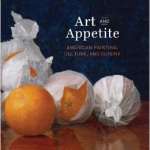
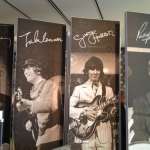
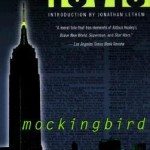








Be the first to comment.